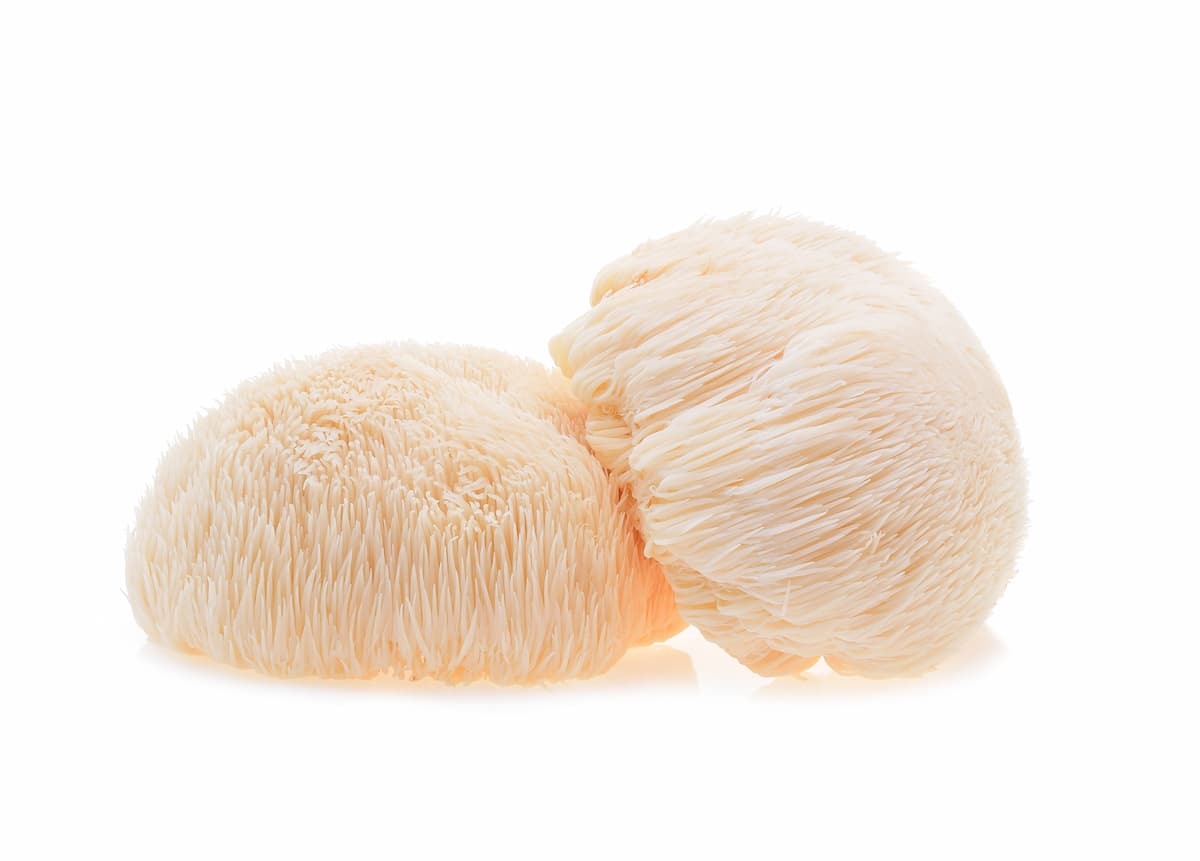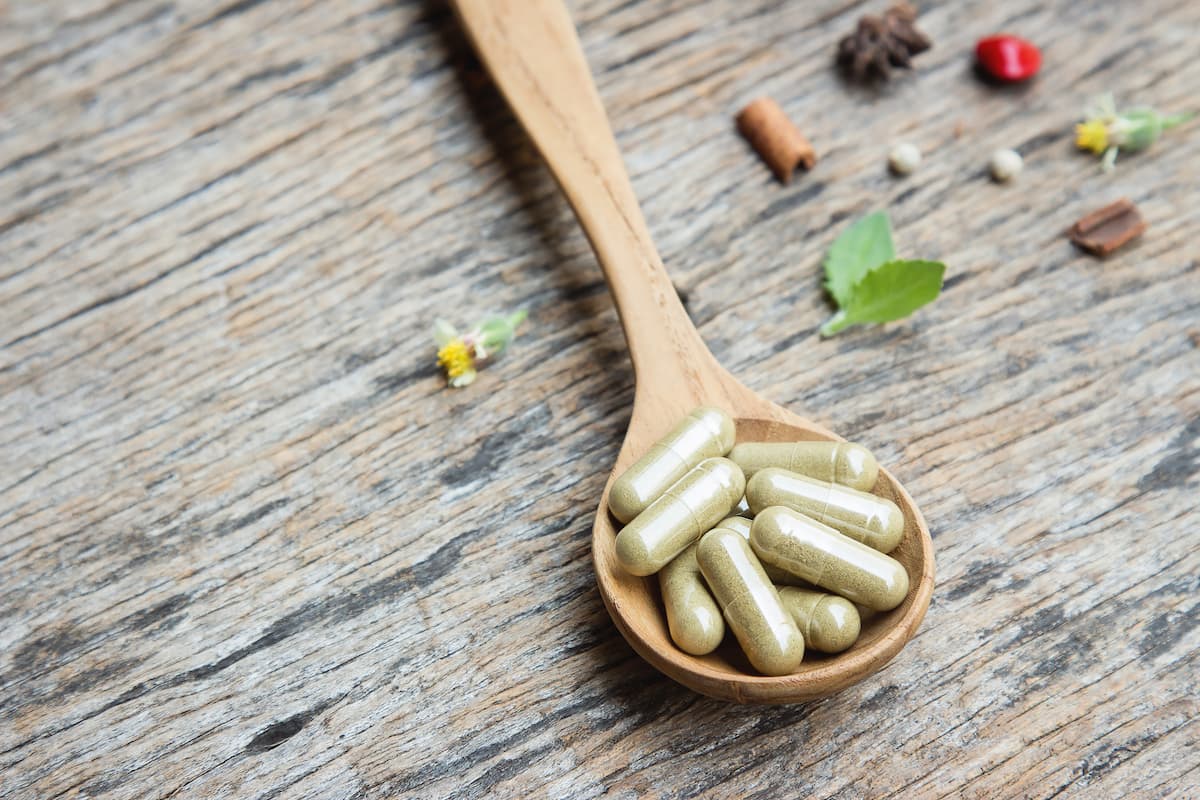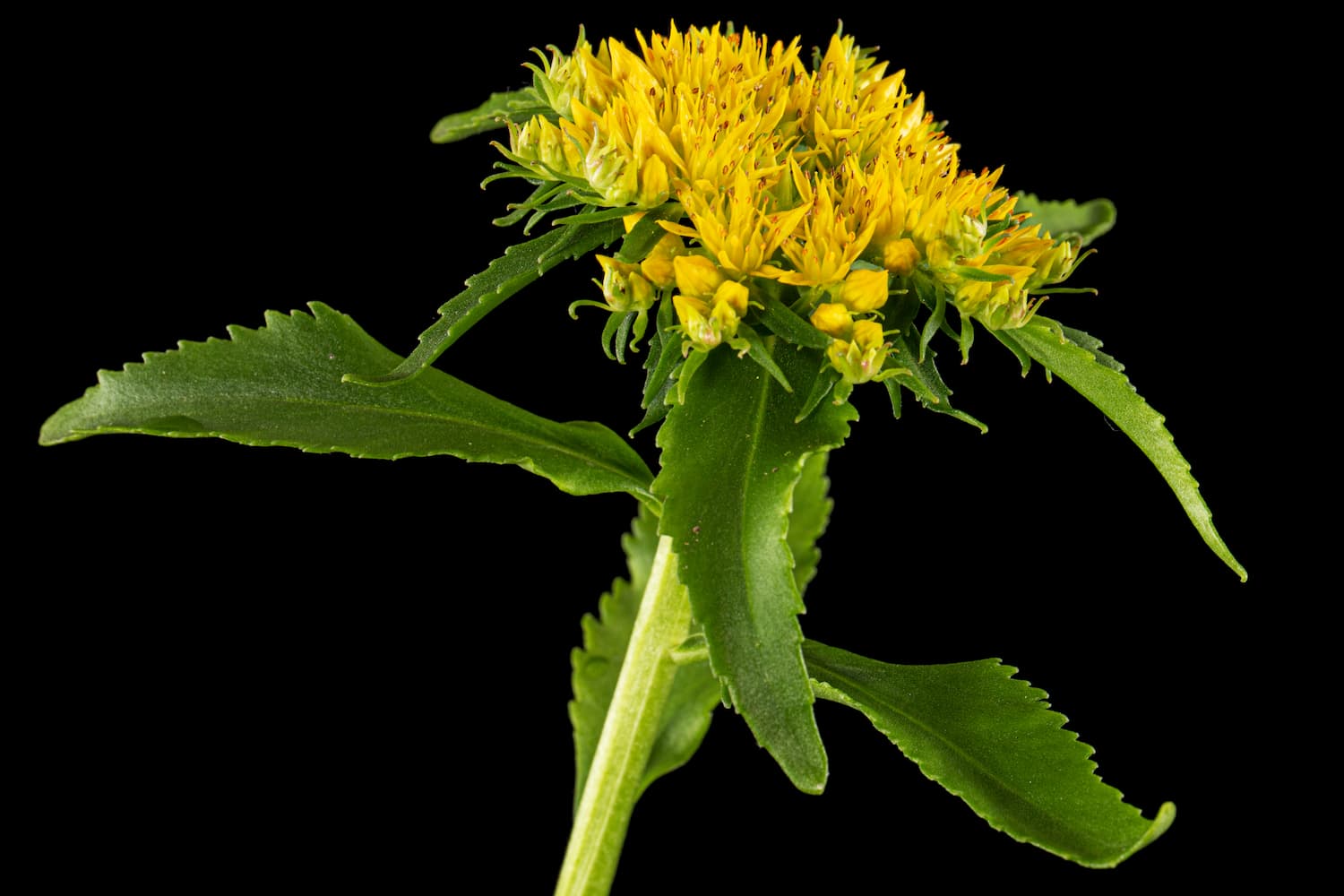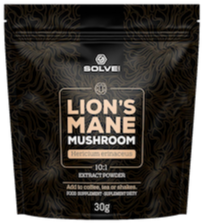Sophora coneflower - properties, effects, opinions + products
The vital fungus Hedgehog soprano is showing interesting potential for action in scientific studies.


Learn more about our editorial process
.

Learn more about our editorial process
.

Learn more about our editorial process
.

Learn more about our editorial process
.
Why you can trust us
Articles on Natu.Care are written based on scientific research, data from government websites and other reliable sources. The texts are written in cooperation with doctors, nutritionists and other health and beauty experts. Articles are reviewed before publication and during significant updates.
.Learn more about our editorial process
.Information about advertisements
Content on Natu.Care may contain links to products from the sale of which we may receive a commission. When creating content, we adhere to high editorial standards and take care to be objective about the products discussed. The presence of affiliate links is not dictated by our partners, and we select the products we review ourselves completely independently.
.Learn more about our terms and Conditions
.Had the game Mario been revamped, the main characters would certainly have been jumping on the hedgehog soprano to gain strength and immunity. Eastern medics already knew about the interesting properties of this mushroom several thousand years ago - they may not have jumped on it, but the decoctions and extracts certainly served them.
I've collected scientific research on the properties of this mushroom - you'll find out whether it adds +10 to your immunity, improves level cholesterol or whether it's a game over and... not for you. And if you don't want to consume it, consider it as a decoration. It's just lovely.
From this article you will learn:
- What properties soprano coneflower has.
- What is the most important thing about it?
- What scientific research suggests. .
- How to choose the best coneflower preparation. .
- How to consume it safely. .
See also:
.- Ashwagandha
- Cordyceps
- Reishi
- Chaga
- Lion's Mane
- Machachine Gun
- Caffeine
- Recommended dietary supplements with adaptogens
Hogweed - a lovely fungus
.Erowan's mane (Latin Hericium erinaceus), also known as lion's mane (English: lion's mane) or yamabushitake is a type of parasitic fungus with adaptogenic properties. It has been used for thousands of years in Eastern medicine for its neuroprotective properties and positive effects on cognitive function and moodand.
This mushroom grows naturally in forests around the world, particularly in Asia, Europe and North America. It is a saprotrophic fungus, meaning it feeds on dead organic matter. It usually grows on dead trees such as oak, maple or pineand.
When writing about the Hedgehog soplolly, it is impossible to ignore its distinctive appearance. This fungus is simply... adorable. Looking at it, you feel like stroking it because it looks like the fluffy mane of a lion - hence the name lion's mane.
The lion's mane is a very special mushroom.
Before it was fashionable...
.For several years now there has been a boom for dietary supplements, coffees or even cosmetics with mushrooms. But as early as 450 BC, the Greek physician Hippocrates identified mushrooms as powerful anti-inflammatory agentsand. He used them on his patients before it was fashionable to do so.
Hogweed - properties
.Scientific studies (mostly involving animals) suggest that coneflower exhibits neuroprotective, immunostimulatory, anti-inflammatory properties, may have positive effects on the cardiovascular system, lower cholesterol and blood sugar, as well as improving mood and reducing anxietyand.
In Asia, lion's mane is used to treat a variety of ailments to this day, but bear in mind that there are few scientific studies involving humans and we cannot say that lion's mane has the properties to cure.
There is no strong scientific evidence for the health-promoting effects of coneflower. Eastern medicine, which still uses this mushroom today, is also culturally and medically different from Europe. Their medicine is more than 5,000 years of tradition and experience - sometimes factual, sometimes customary..
 .
.
Witold Tomaszewskidoctor of medical sciences
.Don't give up on conventional treatment, and treat coneflower as an interesting addition - maybe it will give you something, maybe not. It certainly tastes interesting with coffee. And that lovely appearance.
The properties of this mushroom are influenced by the bioactive compounds it contains. Hedgehog soprano containsand:
- polysaccharides of β-glucan, .
- amino acids, .
- antioxidants, .
- flavonoids, .
- sterols, .
- erinacins (substances responsible for the functioning of the nervous system), .
- hericenones - (compounds that support the production of nerve growth factor).
The mysterious-sounding erinacins are substances responsible for the nervous system, while hericenones are compounds that support the production of nerve growth factor. They are mainly responsible for the neuroprotective potential of lion's mane..
 .
.
Ilona Krzak Master of Pharmacy
What does coneflower help? This fungus potentially:
Protects the nervous system
.The two compounds contained in the mushroom, hericenones and erinacins, have been shown in microscope studies to have neuroprotective propertiesand. This means that they reduce damage and prevent diseases of the nervous systemand.
The brain's ability to grow and make new connections tends to decline with age, which may explain why mental functioning deteriorates in many older people..
 .
.
Witold Tomaszewskidoctor of medical sciences
.Hogweed may promote neuronal growth and protect the brain against neurodegenerative diseases, for example. A 2020 study of 41 people with Alzheimer's disease suggests that supplementation with 1g of coneflower per day for 49 weeks significantly improved cognitive test scores compared to placeboand.
Mouse studies also suggest the potential of this fungus in protecting the nervous system. Extracts of lion's mane reduce symptoms of memory loss in these rodents and also prevent neuronal damage that accumulates in the brain during Alzheimer's disease .
Promotes immunity
.Animal studies suggest that coneflower may improve immunity by increasing the activity of the intestinal immune system. It protects the body from pathogens that enter the gut through the mouth or noseand.
The effects may be partly due to beneficial changes in gut bacteria that stimulate the immune system .
Even 70% of immunity comes from the gut. The primary component of the gut immune system is lymphoid tissue, which contains up to 80% of all antibody-producing immune cells..
 .
.
Ilona Krzak Master of Pharmacy
In a somewhat drastic 2012 study, mice were given a lethal dose of salmonella bacteria. The results suggested that daily supplementation with sea urchin extract almost quadrupled the life of the miceand.
The effect of mushroom extract against bacterial infections in mice probably occurs through activation of innate immune cells .
.Reduces inflammation and oxidative stress
.Hogweed contains potent anti-inflammatory and antioxidant compounds, which may reduce the likelihood of heart disease, cancer and autoimmune disorders (e.g. Hashimoto's disease)and.
Hogweed contains a compound called amycenone, which has been shown to have anti-inflammatory effects..
 .
.
Ilona Krzak Master of Pharmacy
Fungus vs fungus
A 2012 study tested the antioxidant capacity of 14 species of fungiand. Hedgehog soprano mushroom had the fourth highest antioxidant activity. Who outranked our pretty mushroom? On the podium were:
- Reishi (Ganoderma lucidum) .
- Schizophyllum commune (Schizophyllum commune) .
- Pleurotaceae (Pleurotaceae) .
Some other animal studies suggest that Lion's mane extract reduces markers of inflammation and oxidative stress in rodents. It may also be useful in the treatment of inflammatory bowel disease, liver damage hepatic damage and strokeand.
The mushrooms may also help reduce some of the health risks associated with obesity, as they have been shown to reduce the amount of inflammation released by adipose tissue .
Prolonged inflammation and oxidative stress are the underlying causes of many of the modern diseases we face..
 .
.
Ilona Krzak Master of Pharmacy
Promotes mental health
.Depression and other mental health disorders are increasingly being diagnosed and up to a third of the population in developed countries may experience themand. The interest in mushrooms and their potential in supporting mental health is therefore not surprising. Unfortunately - for now, only rodent studies look promising.
Researchers' work suggests that the soprano coneflower extract has anti-inflammatory effects that can reduce symptoms of anxiety and depression in miceand. The researchers assessed this by checking various behavioural changes in the rodents during the study.
Stressed mice have prolonged immobility time (a 'freeze' response to stress) and a shorter duration of staying afloat in the forced swim test (less motivation to survive). When administered for 4 weeks, sea urchin extract reduced their stress and added motivation to swim longer and fight for lifeand.
There was one study from 2010 involving 26 Japanese menopausal women. They were divided into two groups and consumed either a placebo or cakes with soponite extract (daily portion of extract totaling 2 g). The cake group reported reduced feelings of irritability and anxietyand.
Protects against stomach ulcers
.Stomach ulcers are open wounds that develop in the stomach's mucosa. Acidic gastric contents attack it, causing it to become damaged and ulcerated. A common cause of gastric ulcers is an overgrowth of the bacteria Helicobacter pyloriand.
And this is where coneflower enters in fungal armour -its extract may inhibit the growth Helicobacter pylori and protect the stomach lining from damage. Several in vitro (in-tube) studies from 2013-2015and suggest this. However, scientists do not know (yet) whether the extract has the same effect inside the stomach.
In 2016, a study was conducted in Norway on patients with ulcerative colitis. Over a 3-week period, patients taking a 14% extract of coneflower experienced a reduction in disease symptoms and improved quality of lifeand.
But... when the same study was repeated in patients with Crohn's disease, the benefits were about the same as with placeboand.
.Another 2013 study in rats showed that sea urchin extract was more effective in preventing alcohol-induced gastric ulcers than traditional acid-lowering drugs. It also caused no adverse side effectsand.
Reduces risk of heart disease
.Cardiovascular disease is the leading cause of death in Poland - nearly 50%and. Some scientific studies indicate that coneflower extract may affect some of the factors that promote heart disease.
In vitro studies suggest that the fungus may help prevent the oxidation of cholesterol in the blood. Oxidised cholesterol molecules tend to settle on the walls of arteries, causing them to harden and increasing the risk of heart attack and strokeand.
Research in rodents suggests that 'lion's mane' extract improves fat metabolism and lowers triglycerides. lion's mane contains hericenone B, which may reduce the rate of blood clotting and lower the risk of cardiovascular disease .
One 2010 study suggests that rats fed a high-fat diet and given Lion's mane extract at the same time had 27% lower triglycerides and 42% less weight gain after 28 days .
Important
.According to the National Health Service, up to 3 in 5 adults are obese. This is a serious condition that further leads to, for example, type II diabetes, hypertension and mental health problemsand.
Supports the fight against cancer
.Take this as a curiosity. Whenever an active ingredient comes out and shows anti-cancer potential, some people get over-enthusiastic, forgetting the amount and quality of research that has been done. The use of adaptogenic mushrooms does not cure cancer.
It is cool that coneflower shows such potential, but in few animal or test tube studies.
Esselwort extract causes faster death of cancer cells when mixed with them in a test tube. This is what studies testing the effects of lion's mane on liver, colon, stomach and blood cancer cells suggest. However, one older study from 2005 did not confirm these resultsand.
Cancer occurs when DNA becomes damaged, causing cells to divide and replicate out of control..
 .
.
Witold Tomaszewskidoctor of medical sciences
.Extract from this mushroom slows the spread of cancer. The results of a 2013 study on 10 mice with colorectal cancer suggest that taking an extract of the soprano mushroom reduced the spread of cancer to the lungs by 69%and.
Unfortunately there are no human studies that in any way confirm the potential of lion's mane to treat cancer.
Other potential benefits
.This fluffy mushroom is also being studied for its effects onand:
- memory, .
- concentration, .
- learning, .
- sleep, .
- healing wounds, .
Unfortunately, the findings in these areas concern a small number of humans or were isolated rodent studiesand. However, if you want to see if lion's mane will awaken the lion in your body - buy it and find out for yourself. You can also combine it with other mushrooms.
Hogweed vs Hashimoto's
There are not many solid scientific studies to suggest that the mushroom can affect thyroid diseases such as hypothyroidism and Hashimoto's. lion's mane shows anti-inflammatory potential, but we do not know if it can support endocrine treatment.
Better in mycelium
.According to scientific research on adaptogenic mushrooms, combining different mushrooms can produce synergistic effects and benefits that are not achieved by consuming them individuallyand. Such 1+1=3. A combination of mushrooms in, for example, coffee or a functional drink can have an adaptogenic, tonic effect, reduce stress, fatigue and stimulate the immune system .
SOLVE LABS Collagen Peptides

- Collagen content: 6000 mg hydrolyzed beef collagen type I and III COLLinstant® .
- Additional active ingredients: hyaluronic acid
- Form: powder .
- Dose: one scoop (6 g) daily .
- Sufficient for: 30 days .
Product description
High quality hydrolysate of bovine collagen (types I and III). A daily portion will support jointóry, bone and muscle health. It will also contribute to the quality and appearance of your skinóry and support its regeneration. You will feel the moisturising properties on soft hair and see them on a nice nail plate.
.Pros and cons
High quality hydrolysate of bovine collagen (types I and III). A daily portion will support jointóry, bone and muscle health. It will also contribute to the quality and appearance of your skinóry and support its regeneration. You will feel the moisturising properties on soft hair and see them on a nice nail plate.
.Additional information
High quality hydrolysate of bovine collagen (types I and III). A daily portion will support jointóry, bone and muscle health. It will also contribute to the quality and appearance of your skinóry and support its regeneration. You will feel the moisturising properties on soft hair and see them on a nice nail plate.
.User review
High quality hydrolysate of bovine collagen (types I and III). A daily portion will support jointóry, bone and muscle health. It will also contribute to the quality and appearance of your skinóry and support its regeneration. You will feel the moisturising properties on soft hair and see them on a nice nail plate.
.LION'S MANE, Hedgehog fungus
Product description
Sopl’s Mane will work well for people who’re in need of a natural boost and motivation during daily tasks. If you’re physically or mentally active, Lion’s Mane will have a positive effect on your energy, motivation and can influence your well-being.
Lion’s Mane shows the potential to support immunity, reduce inflammation and support nervous system recovery.
Pros and cons
Sopl’s Mane will work well for people who’re in need of a natural boost and motivation during daily tasks. If you’re physically or mentally active, Lion’s Mane will have a positive effect on your energy, motivation and can influence your well-being.
Lion’s Mane shows the potential to support immunity, reduce inflammation and support nervous system recovery.
Additional information
Sopl’s Mane will work well for people who’re in need of a natural boost and motivation during daily tasks. If you’re physically or mentally active, Lion’s Mane will have a positive effect on your energy, motivation and can influence your well-being.
Lion’s Mane shows the potential to support immunity, reduce inflammation and support nervous system recovery.
User review
Sopl’s Mane will work well for people who’re in need of a natural boost and motivation during daily tasks. If you’re physically or mentally active, Lion’s Mane will have a positive effect on your energy, motivation and can influence your well-being.
Lion’s Mane shows the potential to support immunity, reduce inflammation and support nervous system recovery.
{ product:5a2Tc2Rtmvz4bSjD0U9fek }}
Dosing
.The usual manufacturers' recommended daily dose of coneflower is from 500 to 3000 mg of the extract. Different dosages have been used in scientific studies, but the range mentioned appears to be safeand. Consumption is best divided into 2-3 portions throughout the day, ensuring the body has constant access to the active ingredients.
There are no official recommendations for the daily intake of coneflower. The safest and most beneficial daily portion is an individual matter and depends on your health, age, expectations and medications you are taking. Follow the manufacturer's recommendations on the packaging.
How to take Hedgehog soporific?
.You will experience the best effects of coneflower if you take it daily in a portion 1500 mg for a minimum of 4 weeks. Adaptogenic mushrooms take time to take effect and systematics is key.
Do you need to take breaks when consuming coneflower
.Scientists do not clearly indicate if and when breaks should be taken when taking this fungus. In fungotherapy or phytotherapy (natural methods of supporting the body with plants), a minimum of one week's break in the consumption of coneflower is recommended.
When will I see the effects?
According to research data, experiencing the effects of coneflower depends on your expectations and the problem. You will have to wait about 4 weeks for an improvement in mood, from 4 to 6 weeks for a reduction in cholesterol, and up to a few months for an improvement in nervous system function.
Hogweed - which is the best?
.There are various forms of this mushroom available on the market: tablets, capsules, coffee and functional drinks, dried or raw mushroom. When choosing a coneflower preparation, pay attention to several factors to choose the best quality product.
- .
- Extract. The concentrated form, which is the extract, is 10 times more potent than the ground mushroom.
- Standardisation and DER. With these parameters, you know from which raw material and in what quantity the active ingredient is.
- Daily dose. To give coneflower a chance to work, choose extracts in a daily dose of 1,500 mg. .
Where to buy a good coneflower soporific?
.Good preparations with this fungus can be bought in proven stationary herbal shops or pharmacies (you can immediately check and assess the quality, appearance, smell) or online from manufacturers offering quality products, e.g. at Natu.Care.
And maybe... growing at home?
.You can grow coneflower at home. The best way to grow it is to use a ready-made culture of the mushroom or to buy a specialist mushroom growing kit - it costs between a dozen and a few tens of zlotys.
Cultivating the mushroom at home is a great idea.
The sopling mushroom likes a temperature of 20-25°C and humidity of about 85%. After about 4 weeks, the coneflower will start to grow. The fruit should ripen within 2 weeks and you can start harvesting yourand.
Hogweed - how to eat?
.Soplum coneflower is an edible mushroom - you don't have to eat it just from extracts. It can be eaten raw, cooked, stewed, fried and baked (even above 200°C). It is delicate in taste, to some it reminds them of crab meat. Taking lion's mane powder is the most convenient form.
Expert opinions
.I am most in favour because of the interesting potential action and high safety profile. The action of coneflower within the brain for dementing diseases is interesting. One of the mechanisms of action of the mushroom's active substances overlaps with the mechanism of formation of these disorders. The fungus abolishes the adverse effects that cause the disease..
 .
.
Ilona Krzak Master of Pharmacy
Hogweed is a mushroom known primarily for its neuroprotective properties, that is, protecting and supporting brain function. It is excellent for improving cognitive function (e.g. short-term memory), but also for relieving anxiety or sleep disorders. The effects of lion's mane are worth testing on yourself if you are struggling with any of the aforementioned conditions - this mushroom can have a really powerful effect..
 .
.
Aleksandra Cudna-Bartnicka Clinical nutritionist
The coneflower mushroom has great potential in the prevention and treatment of many diseases - but it is the potential that is important. At the moment, adaptogenic mushrooms are a fresh topic and there are few clinical studies to confirm their actual effects. I would recommend it to patients, but caution that results should not be expected immediately - it needs to be used consistently and patiently..
 .
.
Julia SkrajdaDietitian
.Contraindications to the use of coneflower
.Contraindications to the use of coneflower include: pregnancy, breastfeeding, age under 18, allergy to fungi or allergy-prone, planned surgeryand. No studies with humans have investigated the side effects of taking the soprano coneflower extract, but the fungus is usually well tolerated.
Side effects
.Side effects of taking coneflower are rareand. They usually occur when the person consuming it has an allergy or does not follow the manufacturer's instructions.
The most common side effects areand:
.- gastrointestinal complaints (abdominal pain, nausea), .
- allergic reactions, .
- interactions with medications (anticoagulants and immunosuppressants).
- Immunosuppressive reactions.
Tend to subside after discontinuation of mushrooms.
.Summary
.- Lion's foot fungus is a genus of parasitic fungi. They are also called lion's mane (English for lion's mane) because of their appearance.
- The lion's mane is also called lion's mane.
- It grows naturally all over the world, and is most abundant in Asia, Europe and North America. .
- His beneficial properties are mainly suggested by animal studies. There are few reliable studies on humans.
- These are the most common.
- Animal studies suggest that coneflower may protect the nervous system, cardiovascular system, support immunity and mental health, and reduce the chance of stomach ulcers.
- Recommended daily dosage is 1,500 mg of extract, divided preferably into 2-3 doses. .
- The best supplements with Echinacea are standardised extracts. .
- Eating coneflower is generally safe and well tolerated, and caution should be exercised by people who are allergic to the fungus, pregnant and lactating women, children and those preparing for surgery.
FAQ
.What is the best coneflower soplolly?
.The best coneflower is Solve Labs Lion's Mane Mushroom Powder. It is a standardised 10:1 high quality extract that can be added to coffee or your favourite drinks. The formulation is simple, with no unnecessary additives or fillers. The product is suitable for vegans and vegetarians.
Can sea urchin be combined with other mushrooms?
.Yes, you can combine coneflower with other mushrooms such as Reishi or adaptogens such as ashwagandha. Popular combination products with mushrooms include, for example, Kanaste Better Focus, Solve Labs Muhroom Coffee, Solve Labs Mushroom cacao elixir.
When to take sea urchin soplite?
.The best time to take coneflower is in the morning or early afternoon to give the fungi a chance to 'kick in' and gradually release the valuable active ingredients throughout the day. Timing is important, but so is regularity - take coneflower daily for best results.
Is coneflower protected?
.Yes, the coneflower is under strict species protection in Poland and several other European countries. Due to its rarity, it is included in the red lists of endangered mushroom species.
Does coneflower harm the liver?
.Hogweed does not harm the liver, however there are restrictions on consumption in people with liver disease or blood clotting disorders. If you are on chronic medication, consult your doctor.
.Why children should not consume coneflower extracts?
.Children should not consume coneflower extracts due to the lack of sufficient scientific studies on the safety of use in this age group.
Can coneflower be poured over boiling water?
.Yes, it is usually possible to pour boiling water over sea urchin soplolly, but there are special brewing methods that allow the nutrients and medicinal properties of the mushroom to be better preserved. Read the manufacturer's information on the packaging.
Sources
.See all
.Blagodatski, A., Yatsunskaya, M., Mikhailova, V., Tiasto, V., Kagansky, A., & Katanaev, V. L. (2018). Medicinal mushrooms as an attractive new source of natural compounds for future cancer therapy. Oncotarget, 9(49), 29259-29274. https://doi.org/10.18632/oncotarget.25660
Brandalise, F., Cesaroni, V., Gregori, A., Repetti, M., Romano, C., Orrù, G., Botta, L., Girometta, C., Guglielminetti, M. L., Savino, E., & Rossi, P. (2017). Dietary Supplementation of Hericium erinaceus Increases Mossy Fiber-CA3 Hippocampal Neurotransmission and Recognition Memory in Wild-Type Mice. Evidence-based Complementary and Alternative Medicine : eCAM, 2017, 3864340. https://doi.org/10.1155/2017/3864340
Chong, P. S., Fung, M.-L., Wong, K. H., & Lim, L. W. (2020). Therapeutic Potential of Hericium erinaceus for Depressive Disorder. International Journal of Molecular Sciences, 21(1), Article 1. https://doi.org/10.3390/ijms21010163
Diling, C., Chaoqun, Z., Jian, Y., Jian, L., Jiyan, S., Yizhen, X., & Guoxiao, L. (2017). Immunomodulatory Activities of a Fungal Protein Extracted from Hericium erinaceus through Regulating the Gut Microbiota. Frontiers in Immunology, 8, 666. https://doi.org/10.3389/fimmu.2017.00666
Gu, Y.-H., & Belury, M. A. (2005). Selective induction of apoptosis in murine skin carcinoma cells (CH72) by an ethanol extract of Lentinula edodes. Cancer Letters, 220(1), 21-28. https://doi.org/10.1016/j.canlet.2004.06.037
Kim, S. P., Kang, M. Y., Choi, Y. H., Kim, J. H., Nam, S. H., & Friedman, M. (2011). Mechanism of Hericium erinaceus (Yamabushitake) mushroom-induced apoptosis of U937 human monocytic leukemia cells. Food & Function, 2(6), 348-356. https://doi.org/10.1039/c1fo10030k
Kim, S. P., Moon, E., Nam, S. H., & Friedman, M. (2012). Hericium erinaceus mushroom extracts protect infected mice against Salmonella Typhimurium-Induced liver damage and mortality by stimulation of innate immune cells. Journal of Agricultural and Food Chemistry, 60(22), 5590-5596. https://doi.org/10.1021/jf300897w
Kim, S. P., Nam, S. H., & Friedman, M. (2013). Hericium erinaceus (Lion's Mane) mushroom extracts inhibit metastasis of cancer cells to the lung in CT-26 colon cancer-tansplanted mice. Journal of Agricultural and Food Chemistry, 61(20), 4898-4904. https://doi.org/10.1021/jf400916c
Kushairi, N., Phan, C. W., Sabaratnam, V., David, P., & Naidu, M. (2019). Lion's Mane Mushroom, Hericium erinaceus (Bull.: Fr.) Pers. Suppresses H2O2-Induced Oxidative Damage and LPS-Induced Inflammation in HT22 Hippocampal Neurons and BV2 Microglia. Antioxidants, 8(8), 261. https://doi.org/10.3390/antiox8080261
Li, G., Yu, K., Li, F., Xu, K., Li, J., He, S., Cao, S., & Tan, G. (2014). Anticancer potential of Hericium erinaceus extracts against human gastrointestinal cancers. Journal of Ethnopharmacology, 153(2), 521-530. https://doi.org/10.1016/j.jep.2014.03.003
Li, I.-C., Chang, H.-H., Lin, C.-H., Chen, W.-P., Lu, T.-H., Lee, L.-Y., Chen, Y.-W., Chen, Y.-P., Chen, C.-C., & Lin, D. P.-C. (2020). Prevention of Early Alzheimer's Disease by Erinacine A-Enriched Hericium erinaceus Mycelia Pilot Double-Blind Placebo-Controlled Study. Frontiers in Aging Neuroscience, 12, 155. https://doi.org/10.3389/fnagi.2020.00155
Nagano, M., Shimizu, K., Kondo, R., Hayashi, C., Sato, D., Kitagawa, K., & Ohnuki, K. (2010). Reduction of depression and anxiety by 4 weeks Hericium erinaceus intake. Biomedical Research (Tokyo, Japan), 31(4), 231-237. https://doi.org/10.2220/biomedres.31.231
Narayanan, M., Reddy, K. M., & Marsicano, E. (2018). Peptic Ulcer Disease and Helicobacter pylori infection. Missouri Medicine, 115(3), 219-224.
Nkodo, A. (2019). A Systematic Review of in-vivo Studies on Dietary Mushroom Supplementation for Cognitive Impairment (P14-021-19). Current Developments in Nutrition, 3, nzz052.P14-021-19. https://doi.org/10.1093/cdn/nzz052.P14-021-19
Panossian, A. G., Efferth, T., Shikov, A. N., Pozharitskaya, O. N., Kuchta, K., Mukherjee, P. K., Banerjee, S., Heinrich, M., Wu, W., Guo, D., & Wagner, H. (2021). Evolution of the adaptogenic concept from traditional use to medical systems: Pharmacology of stress- and aging-related diseases. Medical Research Reviews, 41(1), 630-703. https://doi.org/10.1002/med.21743
Reduction of depression and anxiety by 4 weeks Hericium erinaceus intake-PubMed. (n.d.). Retrieved June 19, 2023, from https://pubmed.ncbi.nlm.nih.gov/20834180/
Ryu, S., Kim, H. G., Kim, J. Y., Kim, S. Y., & Cho, K.-O. (2018). Hericium erinaceus Extract Reduces Anxiety and Depressive Behaviors by Promoting Hippocampal Neurogenesis in the Adult Mouse Brain. Journal of Medicinal Food, 21(2), 174-180. https://doi.org/10.1089/jmf.2017.4006
Sheng, X., Yan, J., Meng, Y., Kang, Y., Han, Z., Tai, G., Zhou, Y., & Cheng, H. (2017). Immunomodulatory effects of Hericium erinaceus derived polysaccharides are mediated by intestinal immunology. Food & Function, 8(3), 1020-1027. https://doi.org/10.1039/c7fo00071e
Sokół, S., Golak-Siwulska, I., Sobieralski, K., Siwulski, M., & Gorka, K. (2015). Biology, cultivation, and medicinal functions of the mushroom Hericium erinaceum. Acta Mycologica, 50(2), Article 2. https://doi.org/10.5586/am.1069
Svensson, M., Brundin, L., Erhardt, S., Hållmarker, U., James, S., & Deierborg, T. (2021). Physical Activity Is Associated With Lower Long-Term Incidence of Anxiety in a Population-Based, Large-Scale Study. Frontiers in Psychiatry, 12. https://www.frontiersin.org/articles/10.3389/fpsyt.2021.714014
Szydłowska-Tutaj, M., Szymanowska, U., Tutaj, K., Domagała, D., & Złotek, U. (2023). The Addition of Reishi and Lion's Mane Mushroom Powder to Pasta Influences the Content of Bioactive Compounds and the Antioxidant, Potential Anti-Inflammatory, and Anticancer Properties of Pasta. Antioxidants, 12(3), Article 3. https://doi.org/10.3390/antiox12030738
The Role of Exercise in Preventing and Treating Depression: Current Sports Medicine Reports. (n.d.). Retrieved June 19, 2023, from https://journals.lww.com/acsm-csmr/fulltext/2019/08000/the_role_of_exercise_in_preventing_and_treating.6.aspx
Therkelsen, S. P., Hetland, G., Lyberg, T., Lygren, I., & Johnson, E. (2016a). Effect of a Medicinal Agaricus blazei Murill-Based Mushroom Extract, AndoSanTM, on Symptoms, Fatigue and Quality of Life in Patients with Ulcerative Colitis in a Randomized Single-Blinded Placebo Controlled Study. PloS One, 11(3), e0150191. https://doi.org/10.1371/journal.pone.0150191
Therkelsen, S. P., Hetland, G., Lyberg, T., Lygren, I., & Johnson, E. (2016b). Effect of the Medicinal Agaricus blazei Murill-Based Mushroom Extract, AndoSanTM, on Symptoms, Fatigue and Quality of Life in Patients with Crohn's Disease in a Randomized Single-Blinded Placebo Controlled Study. PLoS ONE, 11(7), e0159288. https://doi.org/10.1371/journal.pone.0159288
Trovato, A., Siracusa, R., Di Paola, R., Scuto, M., Ontario, M. L., Bua, O., Di Mauro, P., Toscano, M. A., Petralia, C. C. T., Maiolino, L., Serra, A., Cuzzocrea, S., & Calabrese, V. (2016). Redox modulation of cellular stress response and lipoxin A4 expression by Hericium Erinaceus in rat brain: Relevance to Alzheimer's disease pathogenesis. Immunity & Ageing : I & A, 13, 23. https://doi.org/10.1186/s12979-016-0078-8
Wang, G., Zhang, X., Maier, S. E., Zhang, L., & Maier, R. J. (2019). In Vitro and In Vivo Inhibition of Helicobacter pylori by Ethanolic Extracts of Lion's Mane Medicinal Mushroom, Hericium erinaceus (Agaricomycetes). International Journal of Medicinal Mushrooms, 21(1), 1-11. https://doi.org/10.1615/IntJMedMushrooms.2018029487
Wong, J.-Y., Abdulla, M. A., Raman, J., Phan, C.-W., Kuppusamy, U. R., Golbabapour, S., & Sabaratnam, V. (2013). Gastroprotective Effects of Lion's Mane Mushroom Hericium erinaceus (Bull.:Fr.) Pers. (Aphyllophoromycetideae) Extract against Ethanol-Induced Ulcer in Rats. Evidence-Based Complementary and Alternative Medicine: ECAM, 2013, 492976. https://doi.org/10.1155/2013/492976
Editorials
Meet the team

Ilona Krzak obtained her Master of Pharmacy degree from the Medical University of Wrocław. She did her internship in a hospital pharmacy and in the pharmaceutical industry. She is currently working in the profession and also runs an educational profile on Instagram: @pani_z_apteki


Ashwagandha affects thyroid hormone levels. Find out if you can use it.

See how mountain pintail can affect your wellbeing.

Check out the opinions of doctors and other professionals about ashwagandha. Also find out what people on the forum think about it.

